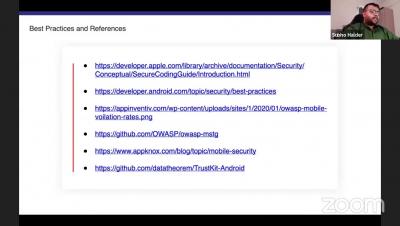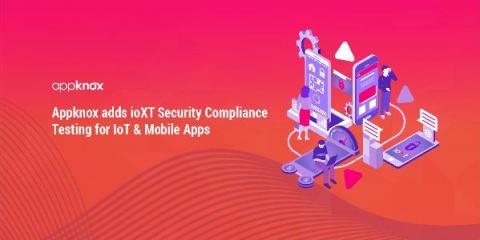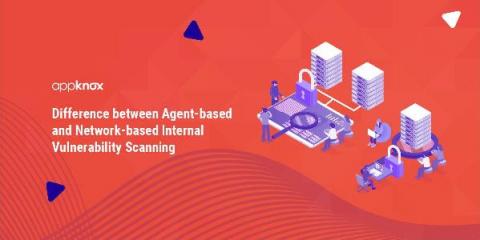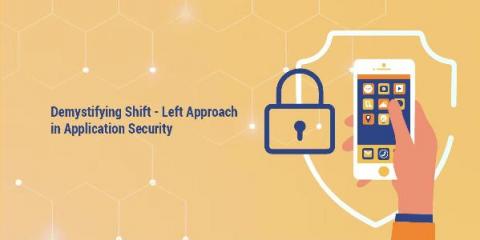Security | Threat Detection | Cyberattacks | DevSecOps | Compliance
June 2021
Four Steps to Modernizing Government Cybersecurity with Zero Trust based on the Executive Order
The pandemic has accelerated digital transformation and telework on a scale never seen before. Employees are working from anywhere and collaboration in the cloud has skyrocketed. But this new environment has expanded the cyber attack surface, compromising critical U.S. infrastructure and lives of our citizens. The recent slew of major cyber attacks including SolarWinds, Microsoft Exchange and Colonial Pipeline, has moved cybersecurity improvements to the top of the agenda for the U.S.
Appknox adds ioXt Security Compliance Testing for IoT & Mobile Apps
Appknox, a leading enterprise mobile application security solution provider has announced a partnership with ioXt, a global standard for IoT security and standardization of security, privacy, and compliance programs. With the alliance, Appknox will enforce the clients with a Security Pledge that focuses on the security of stakeholders, and devices in the IoT environment.
High Level Overview of Lookout CASB
Lookout and NTT DOCOMO Partner to Deliver Security from Device to Identity
Tablets and mobile devices have become an essential part of our daily lives, especially as 5G expands and remote work continues. This means these devices hold some of the most sensitive information that is tied to our digital identity. Today, I’m excited to share that we have expanded our consumer partnership with NTT DOCOMO to include identity monitoring and protection for DOCOMO’s subscribers across Android and iOS devices.
Difference between Agent-based and Network-based Internal Vulnerability Scanning
Technology evolution is the only constant in our lives these days. Sometimes, an existing approach can go a long way in addressing problems, while other times, a new approach needs to be adopted to get the work done. Let’s talk about vulnerabilities; internal networks and software can be riddled with loopholes, which can expose them to breaches and data leaks, paving the way for hackers to have an easy ride.
Lookout Announces Expanded Partnership with Google Cloud to Deliver Zero Trust Security from Endpoint to Cloud
Cloud-based solutions have become essential to how we work and play in the digital era. Many organizations continue their rapid embrace of cloud-based solutions to enable their employees the flexibility to work from anywhere. Cloud spending this year could hit $332 billion, up 23% from 2020, according to a forecast by Gartner, Inc. 1 The cloud has raised our expectations regarding productivity as organizations view the cloud as a true engine of competitive advantage.
Demystifying Shift-Left Approach in Application Security
Understanding Mobile Application Penetration Testing Methodologies
Mobile Application Penetration Testing Methodology as a security testing measure, analyses security perimeters within a mobile environment. Derived from the traditional concept of application security methodology, its main focus lies on client-side security and it broadly puts the end-user in control. By conducting penetration testing, companies can gain insights into the source code’s vulnerabilities, bottlenecks, and attack vectors beforehand.
Not All CASBs Are Created Equal. How Do You Choose?
Software as a service (SaaS) apps have reshaped the way we stay productive. By having everything easily accessible in the cloud, we are able to get work done from anywhere and on any device. But, as we know, this flexibility has also introduced security challenges, as your data is also easier to reach for malicious actors. This is why the purchase of a cloud access security broker (CASB) is never that controversial. Most organizations understand that cloud apps require additional protection.
Web Application Security 2021: Beginners Checklist to Get Started
Who can deny the importance of security for their website or online store? You may have already implemented some security measures, and you can feel quite complacent about it, but they are far from enough when we consider the security challenges. In recent years, even many leading websites and web apps faced a huge surge of security attacks on their websites.
Digging Into AppBoundDomains in iOS
iOS 14 issued a number of changes, as every new release does. But one area where Apple clearly spent a fair amount of time is in their WebViews. Traditionally, UIWebView was the class de jour when a developer wanted to present a web page. In iOS 14 though, UIWebView was officially deprecated in favor of WKWebView.
Addressing 5G security with threat modeling
5G introduces security concerns but threat modeling can help you make better informed decisions about your application security risks. 5G is fundamentally different from 4G, LTE, or any other network the telecommunications industry has ever seen before. It promises data rates 100 times faster than 4G, network latency of under 1 millisecond, support for 1 million devices/sq. km., and 99.999% availability of the network.
Mitigating and remediating intent-based Android security vulnerabilities
In previous posts we explored the potential for intent-based Android security vulnerabilities and then used Snyk Code to find exploits in popular apps on the Google Play store. If you know Snyk, you also know there’s no way we can just point out vulnerabilities and not recommend fixes. Analyzing such an extensive dataset enabled us to review a lot of code.
Lookout and Jamf: Defending Against Mobile Threats
I’m pleased to share that Jamf and Lookout have formed a partnership to integrate Jamf Pro with Lookout Mobile Endpoint Security. Jamf provides mobile device management for Apple devices and specializes in serving IT professionals, schools and small businesses. Together, Lookout and Jamf enable your organization to deploy and provision iOS devices while protecting them against mobile threats such as phishing and network attacks.














